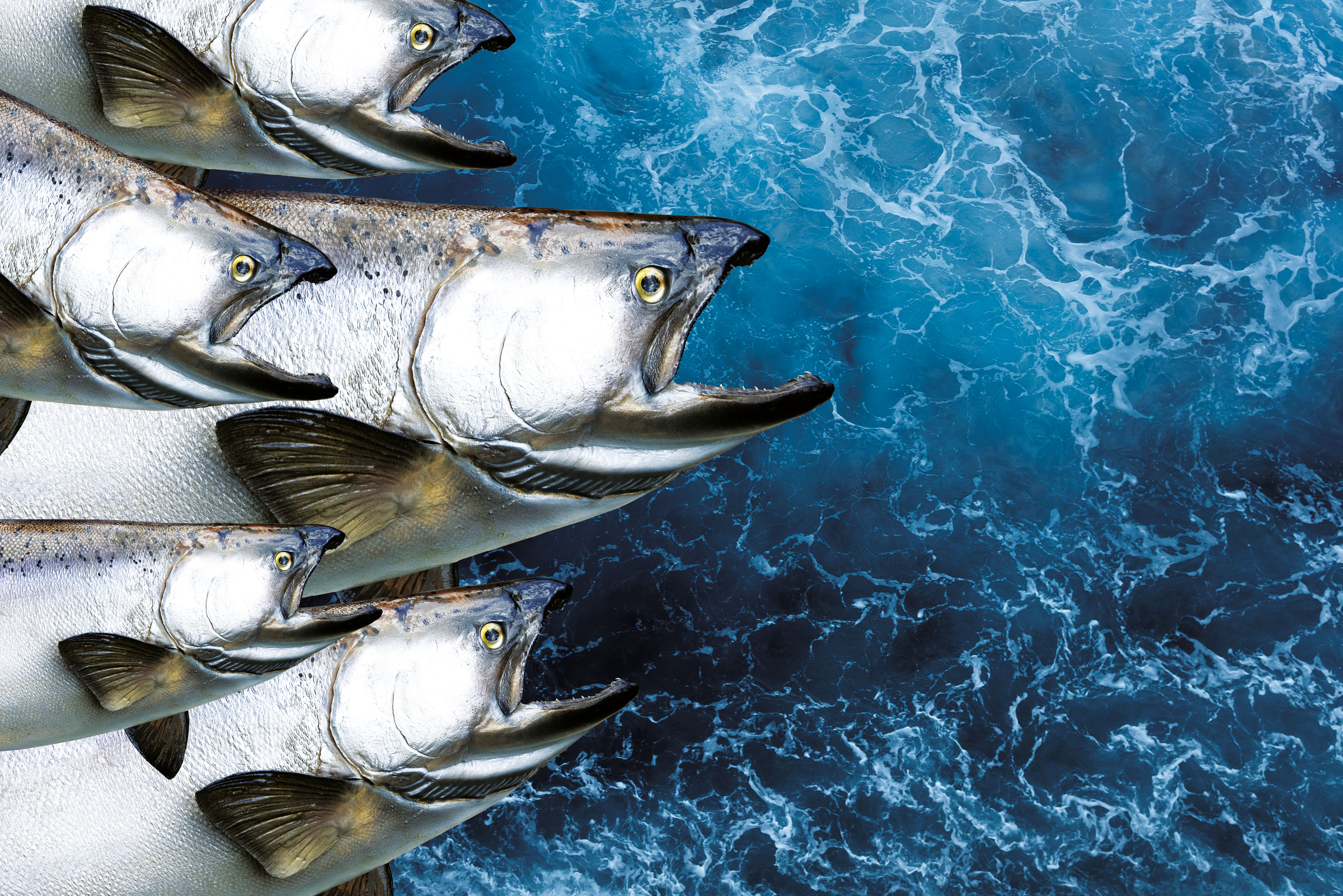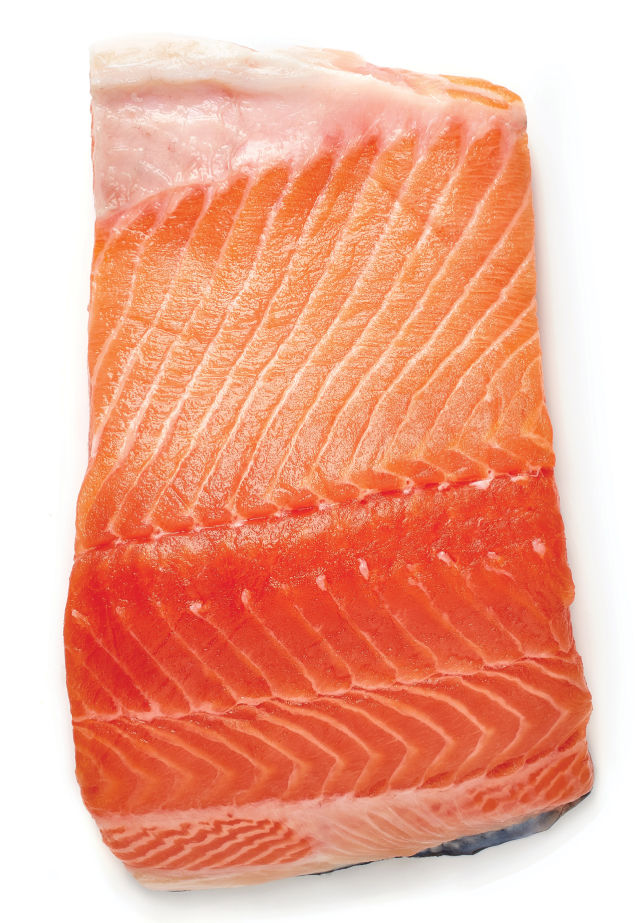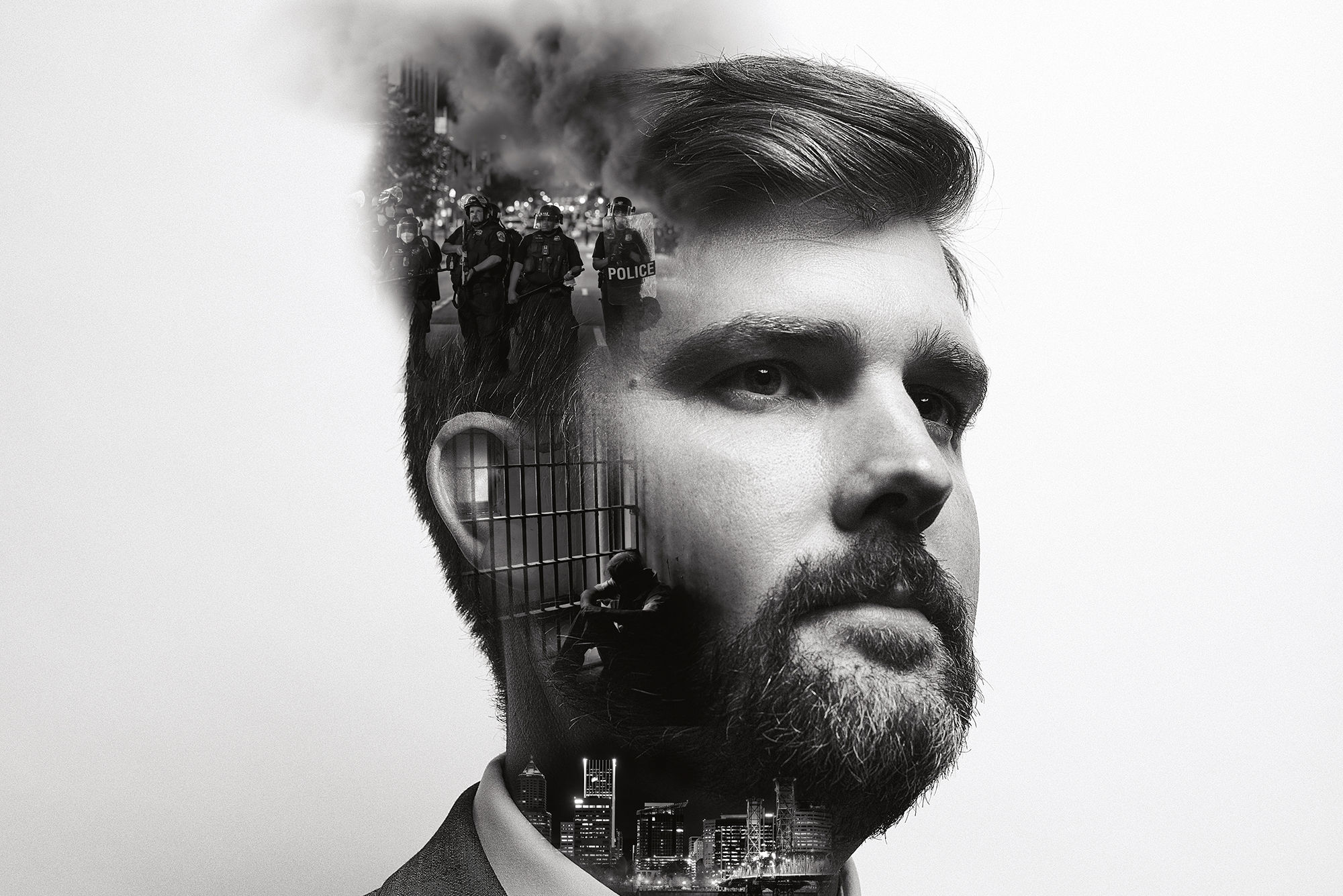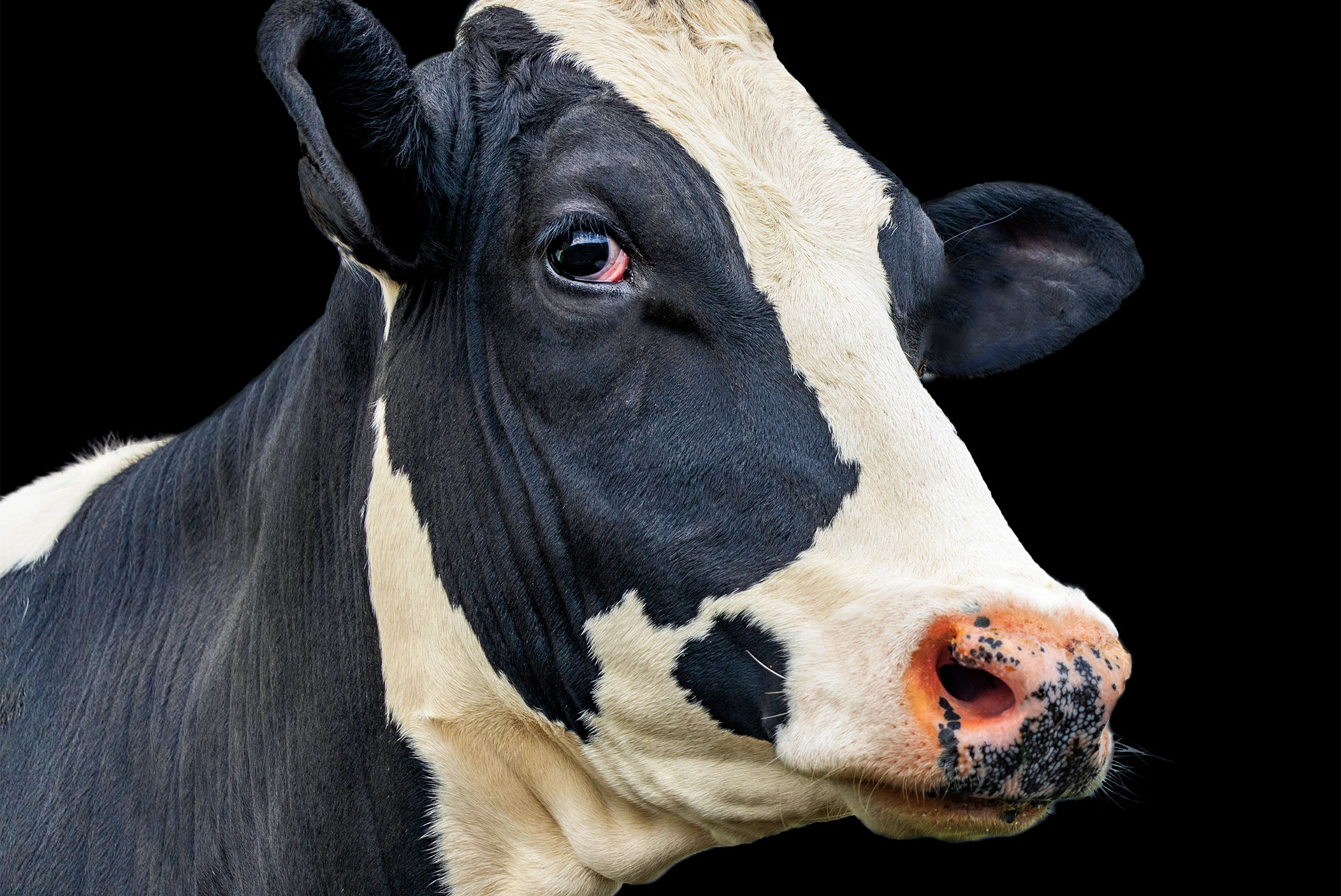
Why Your 'Wild Alaskan Salmon' May in Fact Be Very Oregonian
Inside a nondescript, 25-foot white trailer parked at the Bonneville Fish Hatchery, 40 highway miles east of Portland, salmon are being prepared for their journeys out to sea.
One of four Oregon Department of Fish and Wildlife mobile fish tagging units, the trailer is crammed with $1.4 million of equipment. Its noisy pumps flush tens of thousands of nearly identical, four-inch-long chinook (king) salmon fingerlings through a set of PVC tubes. Along the way, each three- to six-month-old fish is automatically photographed and measured to within a tenth of a millimeter. A computer program sorts fish according to size. Each is then forced through a gate, opened and closed via infrared sensors, into slots that hold them in place while a mechanical blade removes their small adipose fins, forever marking these youngsters as hatchery fish.
Senior technician Geoff Vanderbeck—with his dirty ball cap, scruffy beard, and Carhartt jeans, suitably attired for any Northwest nature-guy obligation, from field work to coworker wedding—monitors a bank of computer screens. Vanderbeck is pleased today.
“Overall the system is running at 99 percent accuracy,” says the 40-year-old Benson High alum. “The hatchery’s doing a good job—these fish are healthy and uniform in size.”
In 2017, Oregon Fish and Wildlife will clip the fins of about 40 million fish. About 6 million—15 percent of them—will have a 1.1 mm bit of stainless steel known as a “coded wire tag” (CWT) injected into their snouts. Microscopic markings on the tags act like Social Security numbers, telling researchers when and where each tagged fish was raised and released. Along the Oregon Coast, thousands of these bits of wire will turn up in bird droppings and the remains of porpoises and other marine life that feed on salmon. Mostly, though, they serve to return data that help biologists and managers establish the dates for fishing seasons and set catch quotas, and to estimate harvest information for wild fish stocks.
The particular stock of 400,000 little kings Vanderbeck and his crew are processing on the day of my springtime visit will be transported by “liberation trucks” to the Ringold Springs hatchery in southeastern Washington state, where they’ll be released into the Columbia River. They’ll swim downriver, past the place of their birth and adipose amputation, and on to the Pacific. Assuming they elude a gauntlet of predators along the way, they’ll then migrate north to Alaska.
Within two to four years, many of these hatchery fish will be caught as wild in Alaskan waters. Eventually, at least a few will return to Portland, in the form of dinner.
In the seafood industry, there may be no word more powerful than “Alaska.” With good reason. In our GMO/Food Inc era, in which the “certified” provenance of everything from tomatoes to chicken to water is subject to scrutiny, Alaskan seafood is one of the last unassailable wild food sources. But when is a “wild Alaska salmon” neither wild nor very Alaskan?
Alaska king salmon connotes a foodstuff sourced today the way it’s been since ancient times. Fish born in remote streams are eventually caught in the open ocean and brought to market. Those not harvested by humans—and which manage to escape the cormorants, sea lions, and grizzlies—return to fight their way up their natal streams to spawn as God intended, renewing an almost-mythological life cycle.
This is the Great Circle of Being version of the story, probable source of any emotional triggers that help steer conscientious diners to splurge for that $40 king special at their favorite restaurant. But in our messy, complicated reality, the Alaska chinook that lands on Portland plates and in the chilled cases at high-end groceries may actually have started its life packed alongside a couple hundred thousand nearly identical fingerlings at a Columbia River hatchery.

The real thing—the world’s wild king salmon stocks—is disappearing fast. In April, the Pacific Fishery and Management Council shut down all commercial and sport salmon fishing in southern Oregon for the remainder of 2017, citing a decline in chinook headed back to spawn in the Klamath River. In Alaska, the world’s last major wild commercial salmon fishery, the situation is perhaps even more dire. Less than 1 percent—maybe less than half of 1 percent—of wild chinooks that migrate to the sea as juveniles are returning to their native streams to spawn. Though highly variable, a wild survival rate of 3 percent is more in line with a sustainable population. The entire Alaska chinook fishery is collapsing under the pressure of insatiable worldwide demand and worsening environmental conditions. Citing “historically low production,” in August the state shut down its entire Southeast Alaska chinook fishery for the year.
“It’s a major war out there over this resource,” says Ed Jones, a salmon biologist with Alaska Department of Fish & Game in Juneau. “If this fishery collapses it’ll be like the end of the world up here.”
Though the economic effect of such a collapse is difficult to measure, the cultural damage would be extensive. “Everyone in Alaska is connected to the salmon industry in some way,” says Erin Harrington, executive director of the Salmon Project, based in Juneau. “There’s no other place in the Western world—if you want to call Alaska that—where most people are still personally identifying with and engaging with wild food harvest and consumption, and placing that at the center of their identity.”
This is where those hatcheries on the Columbia, which primarily produce chinook, coho, and steelhead, enter the picture. Those hatcheries are, as Vanderbeck observed the afternoon I visited, performing well. And as it happens, salmon are generally north-migrating fish. “Just about every salmon that comes out of the Columbia into the Pacific takes a big right turn and heads toward Alaska,” Jones says.
Percentages of the Alaska chinook yield that come from the Columbia vary by year, but estimates range between 50 and 60 percent over the past half-decade. In 2013,
Columbia River fish accounted for 53 percent of all chinook salmon caught in Southeast Alaska. Taking in coastal, wild, and Washington-hatched stocks, too, Oregon and Washington chinooks accounted for two-thirds of the southeast Alaska catch. Native southeast Alaska stock comprised just 1.2 percent of the year’s haul there.
“Columbia River fish are normally one of the larger contributors to the Southeast Alaska and Northern BC fisheries, especially since 2012,” says Jones.
Thus, the Columbia-born chinook population—which many Oregonians indirectly help fund when they pay their electric bills, through the Bonneville Power Administration’s federally mandated contributions to salmon programs—is vital to Alaska’s fishery. (Which is really only one aspect of modern weirdness off the West Coast; this summer, more than 300,000 Atlantic salmon escaped a Washington fish farm, with unknown future implications.)
“Over the last decade we’ve seen record-high chinook returns to the Columbia in the modern era, post-Bonneville Dam,” says Oregon Department of Fish and Wildlife director Curt Melcher. The dam was completed in 1938.
Fisheries are cyclical by nature; Jones, for one, believes that the natural tide may soon turn back in favor of Alaska’s native kings. But the highly complex management of hydroelectric systems on the Columbia—once the world’s most productive chinook river and still home to some actual wild chinook protected by catch-and-release laws—plays a major role in hatchery chinooks’ current boom. Ongoing litigation involving the state of Oregon, the Nez Perce tribe, and various environmental groups versus the BPA and Army Corps of Engineers has affected much of that change through the courts.
“Management of flow through spillways so fish can avoid hydroelectric turbines has been important to chinook recovery,” Melcher says.
And so the chinook salmon caught in Alaska often owe their very existence to the power bills and political arrangements along the Columbia River. They are still delicious. But what, in fact, are they? In one respect, when a customer decides to spring for a taste of the untamed seas of the Great North, they are ... advertising.
“A Columbia River hatchery produces the fish,” Jones says. “They go to the Bering Sea, grow up, then come by Southeast Alaska. We catch them. Well, that’s probably going to be marketed as ‘wild’ Chinook salmon. And I don’t think most people would know the difference between ‘wild-caught’ and ‘wild.’”
There remain in Alaska, of course, wild chinook streams where—if at dwindling rates—salmon do spawn in waters completely undisturbed by human intervention. Some of these fish are even harvested and sold to processors. Like the king salmon, you might manage to beat the odds and eat one yourself. Unlike that fish, consider yourself extremely lucky if you do.




